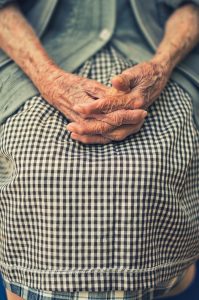This week, one of my patients told me a story. The morning before, their 90-year-old mother took a fall while collecting her Sunday paper. Her slippers caught on the edge of her welcome mat, and her feet flew out from under her body. She landed, hard, on her right hip. Ouch! And we all know what happened to her next, right?
Nothing.
You probably thought I was going to tell you she broke her hip, right? But, she dusted herself off and walked back inside to finish her coffee. Not one broken bone.
She is the exception, not the norm.

Alarming Statistic
Here’s an alarming statistic: a whopping 50% of all Americans over the age of 50 have osteopenia, the more mild form of bone loss, and 25% of women over the age of 65 have the more advanced form of bone loss called osteoporosis. Yet this great-grandmother shook off her fall like nothing happened. The question is, how? How did this individual develop such strong bones, and maintain that strength into her 90s—while other patients begin struggling with osteopenia and osteoporosis decades earlier?
This series of articles will answer the question.
The truth is, the mainstream medical perspective is failing us. Top doctors are telling their patients that taking an off-the-shelf Calcium supplement with a little Vitamin D is enough to prevent bone decay. They prescribe prescription drugs based on x-ray finds. Standard of care treatments of prescription drugs that “stop bone loss” do not create health. They also, by the way, don’t stop bone loss.
That’s the bad news.
That might sound daunting, but here’s the great news: having healthy bones isn’t hard. There’s just much more to the story than we’re usually told.
To understand how to create healthy bones, we have to start by understanding bone itself. In other words—what IS bone? Do you know what your bones are made of?
Bone Composition
In general, bone is made of two things, minerals, and protein.

Taking a look at the pie chart, we can see a more detailed breakdown of bone composition. Specifically, we can see that while bone contains an impressive amount of calcium, over one-quarter of our bone (28% percent) is composed of other minerals such as phosphate, carbonate, and magnesium. The takeaway? Calcium matters—but it is part of a team. To keep our bones healthy and strong, we need a whole team of minerals, not just calcium.
It’s equally important not to overlook the protein component of bone. Protein is responsible for a very special collagen matrix, called osteoid. Osteoid acts like a net, to collect the minerals—crucial to bone health. Protein and minerals work together to build strong bones. So, making sure you have a strong net is just as important as making sure you have the right minerals to catch! You can’t make healthy bones with just minerals, or just protein. You need both.
Over the next several weeks, we will cover six common myths about bone health and provide answers that will show you how to create strong, healthy bones and maintain them throughout your life.
Next week we will cover Myth #1 – Pills over Diet – Calcium Supplements are the Solution and provide the truth to that myth. By the end of the series, you will have a playbook to refer to for healthy, strong bones that will support you as long as you live.
